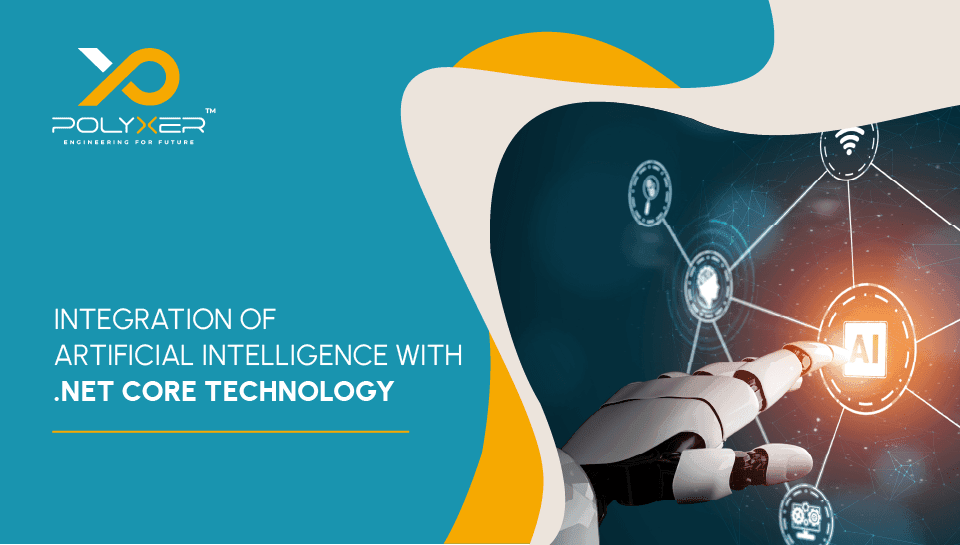
The Future of Software: Exploring AI, Machine Learning, and Beyond

How to Become a Software Architect in 2023-24?
Introduction
Artificial Intelligence has become the buzzword among developers nowadays as it has gained immense popularity in the last few years. It is an innovative technology that is a subset of knowledge engineering. It empowers business and their apps to inculcate reasoning and problem-solving.
With the help of Artificial Intelligence, the developers could develop their apps for any platform including mobiles, desktops, and web platforms. Artificial Intelligence has made a niche for itself.
By integrating AI with .NET applications and other corporate apps and solutions, every organization seeks to strengthen its IT system.
Here, we are taking you through .NET introduction, reasons to integrate it with AI, its suitable use cases, and how you can integrate AI with .NET applications.
This blog uncovers everything you need to know about custom software development.
Know What is .NET!
An open-source, highly secure, open to more than 45+ languages, free, and most used framework platform by software developers in the past two years.
Organizations from all around the world rely on it for its unmatched performance, scalability, and security. Its capability to automate repetitive tasks, optimize time-consuming procedures, and boost employees’ productivity are reasons why organizations choose it.
Now, they want more. Today organizations aim to boost productivity by combining .NET programs with AI(Artificial Language) and ML(Machine Learning).
The versatility of .NET allows for the integration of internal IT infrastructure with third-party programs, platforms, and data sources. It enables them to use data effectively and maximize the value of information and data that have been gathered. Additionally, it provides a broad range of tools and resources that are essential for creating, maintaining, and protecting dependable business applications. For companies looking to invest in a successful IT ecosystem, .NET is a pricey possession.
Reasons to Implement the Integration
Business capabilities, performance, and productivity must be used to analyze AI and ML. Businesses may customize experiences, automate and optimize workflows, and get new insights into their data by integrating AI and ML with .NET apps. All of these things can help businesses become more productive and efficient. Here are several justifications for why .NET apps need to use AI and ML:
- Process Automation
- Predictive Analytics
- Personalisation
- Advanced Analytics

AI can be utilized in .NET core web applications to add intelligent features and enhance user-experiences. Following are some common use cases of AI with .NET core applications:
Natural Language Processing(NLP):
Integrating AI in .NET applications enables them to understand spoken words and texts like humans. NLP techniques can be employed to analyze and understand text inputs from users. Organizations use NLP to implement functionalities like sentiment analysis, language detection, named entity recognition, text summarization, or chatbots. It helps to process human language in the form of text or voice data.
Image and Video Recognition:
Organizations have improved the functionality and capacity to process photos and videos by leveraging cutting-edge technologies. AI models can be trained to identify and classify the images. By incorporating image recognition capabilities into your .NET Core web applications, you can develop features like image-based search, object detection, or facial recognition.
Recommendation Systems:
AI algorithms can analyze user behavior and preferences to provide personalized recommendations. To employ collaborative filtering or content-based filtering techniques, it will suggest products, articles, or other relevant content to users. These recommendation models can be trained and integrated into your .NET Core web applications.
Voice Recognition and Speech-To-Text:
Trained AI models can recognize voice and convert speech into text. It is helpful to enable features like voice commands, transcription services, or voice assistance. Services like Azure Speech Services or Google Cloud Speech-to-Text can be integrated into your ASP.NET Core application to enable speech recognition capabilities.
Chatbots and Virtual Assistance:
AI-powered chatbots or virtual assistants can enhance user interaction and improve satisfaction rate by providing automated responses or performing tasks based on natural language input. It also aids in saving money. As companies would not have to hire support executives.
How to Integrate AI into .NET Applications?
Being an open-source framework, .NET Core offers developers the flexibility to maintain the modularity within the development environment to simplify the code. Besides, it enables the accessible introduction of framework libraries and related components necessary for enhancing the app development ecosystem.
To leverage .NET applications with AI and ML functionalities, you must follow the below procedure:
STEP 1: Discover and Define the Use Case
To begin with the AI and ML implementation, firstly, you should define the project purpose and goal. It will offer you a clear insight into the appropriate use case of your .NET application. For instance, you will know whether you need ML or AI for implementing chatbots, virtual assistants, image processing, decision-making, automation, or anything else.
STEP 2: Gather Relevant Data from Multiple Sources
A machine learning algorithm needs to get trained before you deploy it in the real world. Therefore, must collect and organize a wide range of the datasheets for the ML application. Further, verify the facts and all other information present in datasets for relevancy, timelines, and accuracy.
STEP 3: Select the ML and AI Library
Select the appropriate .NET-compatible ML and AI framework, toolkit, or library according to your use case. ONNX, TensorFlow, ML.NET, PyTorch, and CNTK are the top libraries/frameworks that most .NET developers prefer. Although, before you select any of them, ensure you have complete hardware and software resources to prevent issues.
STEP 4: Develop the Application and Train the Model
After selecting the library or framework, start AI or ML model training. During the training, provide enormous inputs to the models and store their output. Further, examine the results, and update the data as required to receive expected predictions. Additionally, develop the .NET application, test it across devices, and ensure its functioning as required.
STEP 5: Integrate .NET Application and AI Model
Once your AI/ML model completes its training and you receive the expected outputs, integrate it into the .NET application. Through a relevant API (Application Programming Interface), you can effortlessly establish communication between AI/ML model and .NET software. Moreover, test the compatibility, overall functioning, and performance before deploying it.
STEP 6: Constantly Monitor, Update, and Train
Once the .NET application gets deployed, constantly monitor its health, performance, and speed. And if you find any bugs or loopholes, patch them before exploitation. Also, frequently feed your model with new data to keep it updated and to receive better outputs.
Make Your Application Flawless and Scalable!
Only an expert developer can implement the advanced technology of the AI model. You must highly focus on your company’s skill set, expertise, and experience in the development domain. Polyxer Systems is a top-notch .NET development services company. We offer a complete range of .NET services integrated with AI/ML models with the help of our group of expert developers. Our dedicated developers majorly focus on making your applications scalable and run flawlessly!







